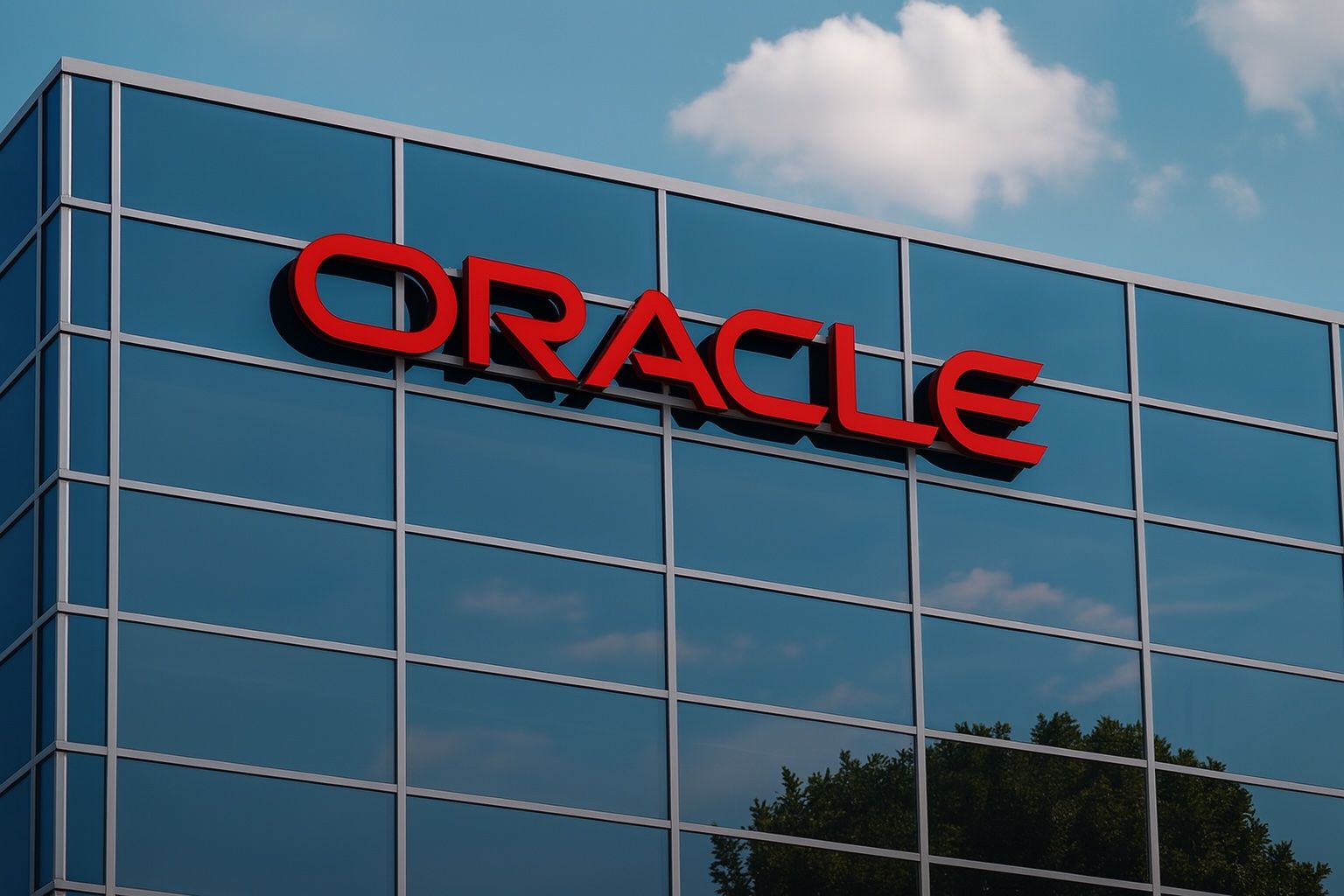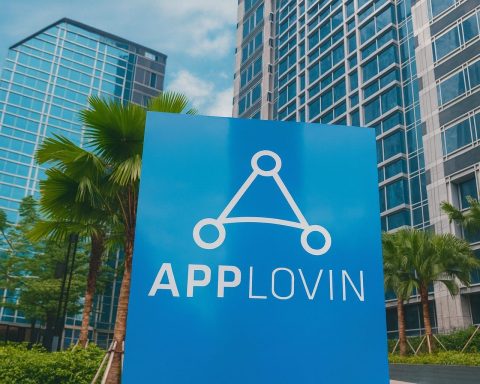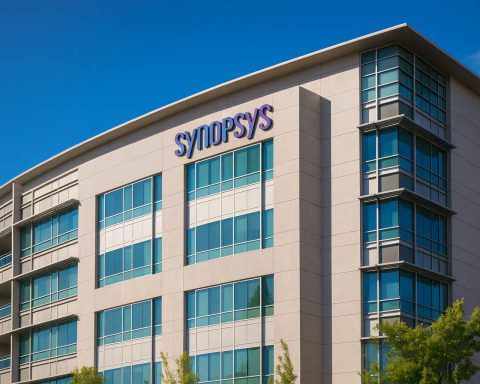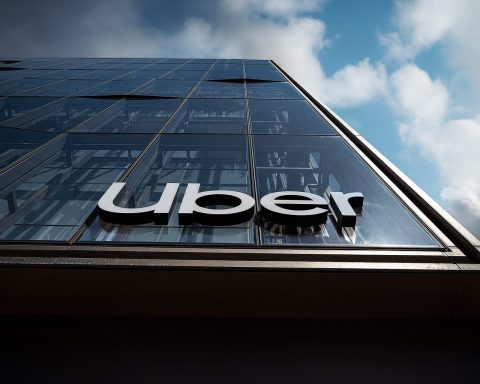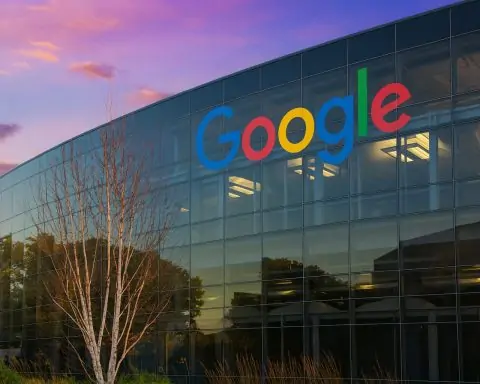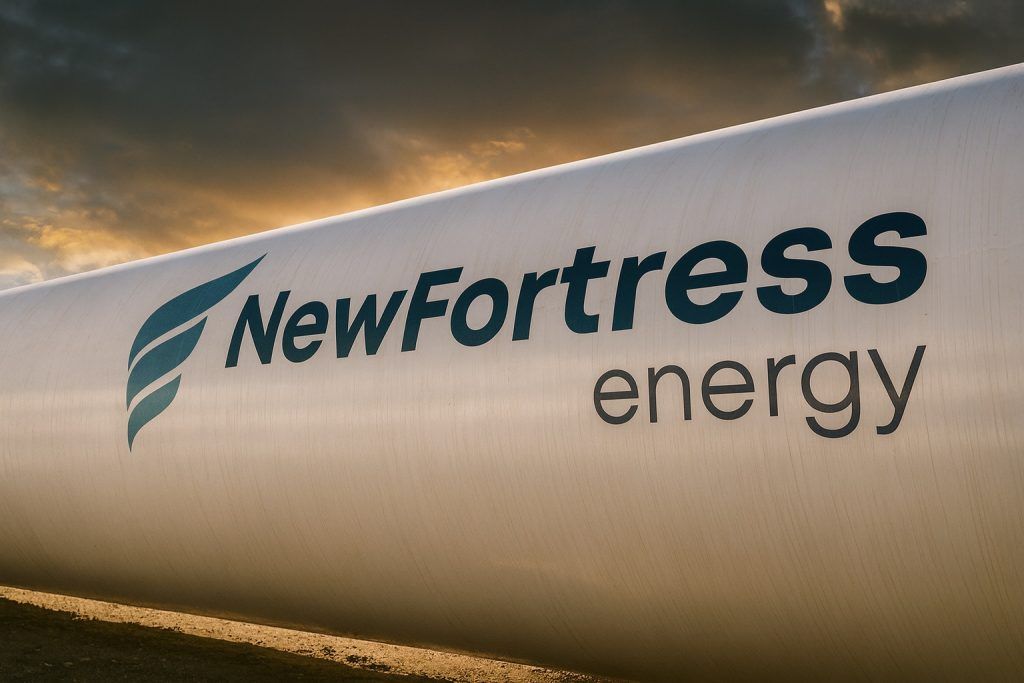- Surging Stock Price: Oracle Corporation (NYSE: ORCL) shares are trading around the high-$270s as of Oct. 29, 2025, after rebounding from a mid-October dip. The stock is up roughly 70–75% year-to-date [1], vastly outperforming the broader market and many Big Tech peers. It hit an intraday record near $345 in early September after a one-day +36% surge on AI news [2], and even after some profit-taking, Oracle remains one of 2025’s top-performing tech stocks.
- AI Mega-Deals Fueling Growth: Oracle’s rally has been driven by massive cloud contracts tied to artificial intelligence. The company stunned the industry with a $300 billion, five-year cloud deal with OpenAI – one of the largest tech contracts ever – and a $20 billion+ infrastructure pact with Meta Platforms [3] [4]. These and other big wins (including Elon Musk’s xAI) catapulted Oracle’s cloud backlog to about $455 billion in future commitments [5], a staggering 359% increase from a year ago. Oracle executives say demand from AI firms is driving “hundreds of billions” in new bookings [6].
- Strong Earnings, Ambitious Forecasts: In its latest earnings (fiscal Q1 2026, quarter ended Aug. 31), Oracle’s revenue rose 12% to $14.93 billion, with cloud services revenue up 28% (to $7.2 billion) [7]. Adjusted EPS came in at $1.47, roughly flat and just a penny shy of estimates [8]. Oracle raised its outlook dramatically – executives project cloud infrastructure sales will grow ~77% this year to $18 billion and reach $166 billion by FY2030 (nearly 75% of expected total revenue) [9]. That far exceeds prior forecasts and implies sustained hypergrowth in AI-driven cloud demand.
- Analyst Reactions – Bullish and Cautious: Wall Street is broadly bullish on Oracle’s AI transformation. Dozens of analysts now rate ORCL a buy, and the consensus 12-month price target sits around $320–$330 [10], implying further upside. Jefferies called Oracle’s AI-fueled quarter “truly historic” and set a $360 target, and Citigroup went even higher at $410 [11]. However, some urge caution. Oracle’s valuation – about 45–60× earnings – is well above peers, and one skeptic (Redburn) labeled the giant OpenAI deal “very risky,” slapping a sell rating and $175 target [12]. Bears warn that Oracle’s growth is highly concentrated in a few big AI customers and question whether those clients can fully utilize – and afford – the unprecedented cloud capacity they’ve reserved.
- AI Initiatives and Partnerships: Oracle’s strategic pivot to AI and cloud is on full display. At its mid-October Oracle AI World conference, the company unveiled new AI products like the Oracle AI Data Platform (a toolkit to connect enterprise data to AI models) and built generative AI assistants into its Fusion Cloud applications for ERP, HR, and CRM, helping customers “fast-track AI adoption” [13] [14]. Oracle is also expanding its infrastructure might: it announced plans for an OCI “Zettascale” supercomputing network spanning 800,000 Nvidia GPUs, and partnered with AMD to deploy 50,000 additional GPUs by 2026 [15]. This week, Oracle joined NVIDIA and the U.S. Department of Energy in a landmark project to build the DOE’s largest AI supercomputer [16], underscoring Oracle’s growing role in high-performance AI cloud services. Meanwhile, Oracle’s collaborative approach with industry peers – hosting Google’s upcoming Gemini AI models on Oracle Cloud and integrating IBM’s Watsonx AI platform into OCI – along with multi-cloud tie-ups with Microsoft Azure and Amazon AWS, have rapidly elevated Oracle into the conversation as the “fourth hyperscaler” in cloud computing [17] [18].
Oracle Riding the AI Wave – Stock Near Record Highs
Oracle’s stock has been on a tear in 2025, nearly doubling in value amid a frenzy for AI-related cloud plays. Shares began the year around $170 and recently hit all-time highs, reaching the mid-$300s in September. The stock currently trades in the high-$270s to low-$280s – about 20% off its peak – after some volatility in October, but still up roughly 70% year-to-date [19] [20]. At these levels Oracle’s market capitalization is around $780–820 billion, making it one of the five most valuable U.S. companies. The stunning rally has far outpaced the S&P 500 and even eclipsed the gains of Big Tech’s “Magnificent Seven” stocks this year [21].
What’s driving the euphoria? In a word: AI. Investors have piled into Oracle as it transforms from a legacy database vendor into a major player in cloud infrastructure – especially for AI workloads. The turning point came on September 9, 2025, when Oracle’s quarterly results revealed an “astonishing” influx of cloud business from a handful of huge AI contracts [22]. Oracle’s remaining performance obligations (backlog of contracted revenue) ballooned to $455 billion, up 359% from a year earlier [23], signaling that an enormous wave of future revenue is locked in. The next day, ORCL stock exploded nearly 40% higher, marking its biggest one-day gain since 1992 [24]. The surge briefly sent Oracle’s market cap above $900 billion – at one point vaulting co-founder Larry Ellison past Elon Musk as the world’s richest person on paper [25].
That blistering momentum cooled slightly as traders digested the risks and the broader market took some profits. Oracle shares pulled back from their mid-September records, and in mid-October the stock saw a ~7% one-day dip amid profit-taking and questions about its lofty forecasts [26]. Still, Oracle remains one of the year’s top-performing tech stocks, and optimism reigns that the company’s aggressive bet on AI could push it into the elite trillion-dollar valuation club in the not-too-distant future. “If I were going by momentum, Oracle would be the overwhelming favorite to be the next trillion-dollar tech giant,” CNBC’s Jim Cramer remarked on Wednesday [27], noting that the stock is up about 69% year-to-date. Cramer lauded Oracle for “riding the AI data center wave to achieve tremendous gain,” but also cautioned that no company has more riding on OpenAI’s success than Oracle does [28] [29].
AI Mega-Contracts Transform Oracle’s Cloud Business
The foundation of Oracle’s bull case is a series of blockbuster cloud deals that dramatically expand its role in the AI revolution. Most eye-popping is Oracle’s partnership with OpenAI, the creator of ChatGPT. In late September, reports (later confirmed by Oracle management) revealed that OpenAI committed to spend around $300 billion over five years on Oracle’s cloud infrastructure [30]. That equates to an astounding $60 billion per year – a scale virtually unheard of in enterprise tech. For context, $60 billion is about equal to Oracle’s total annual revenue last year, and larger than the GDP of many countries.
This OpenAI contract, part of a project codenamed “Stargate,” will kick in fully by 2027 and involve building massive new data centers to deliver an estimated 4.5–5 GW of computing power [31]. Oracle said the deal added roughly $317 billion to its backlog in a single quarter [32]. Executives insist that OpenAI’s obligations are backed by long-term agreements and financing plans, though the sheer size has raised eyebrows about feasibility and risk [33]. “Everyone in the industry seems to think OpenAI will be good for the money, but no one needs them to be good for it like Oracle does,” Cramer noted of the arrangement [34]. Oracle’s management, for its part, has voiced confidence. “Of course OpenAI can pay $60 billion per year,” Oracle Cloud CEO Clay Magouyrk told analysts, pointing out that OpenAI and its backers have been raising capital and that Oracle’s contracts lock in the bulk of the revenue [35] [36].
Importantly, Oracle’s AI cloud bonanza isn’t just tied to OpenAI. Meta Platforms (Facebook’s parent) inked a significant deal with Oracle as well. In one 30-day span last quarter, Oracle Cloud signed $65 billion in new commitments from clients other than OpenAI, including a roughly $20 billion multi-year deal with Meta to support its AI ambitions [37]. Meta is aggressively building out AI supercomputing capacity (it’s developing its own large language models and had already struck a $10B cloud deal with Microsoft Azure). Oracle’s win suggests even the biggest tech firms are turning to Oracle for extra AI horsepower. Oracle CEO Safra Catz highlighted that “the newest bookings are coming in from a range of customers, not just OpenAI” [38] [39] – a message aimed at easing concerns that Oracle is over-reliant on one risky client. In total, Oracle said it secured four ultra-large AI cloud contracts in the recent quarter (reportedly including OpenAI, Meta, and Elon Musk’s startup xAI), which turbocharged its backlog to $455 billion [40].
This tsunami of demand is already lifting Oracle’s financials. In Q1 FY2026 (June–August 2025), Oracle’s cloud revenue jumped 28% to $7.2 billion [41], helping drive a 12% increase in overall revenue [42]. While earnings per share were roughly flat (Oracle has been plowing money into new data centers and AI R&D), the company’s guidance implies reaccelerating growth. Oracle now forecasts its Oracle Cloud Infrastructure (OCI) segment will grow 77% this fiscal year to about $18 billion, and reach a stunning $144–166 billion by FY2030 [43] [44]. For perspective, that 2030 cloud revenue target is nearly ten times what OCI generates today – a goal that would require Oracle to sustain ~50–75% annual growth in cloud for several years. Oracle’s CFO also projects $225 billion in total revenue by 2030 (versus ~$50B last year) and earnings around $21/share, well above Wall Street’s previous estimates [45]. These bullish long-term targets underscore Oracle’s view that AI is driving a once-in-a-generation expansion of its addressable market.
To meet the demand, Oracle is investing heavily in capacity. The company spent $8.5 billion on capital expenditures in Q1 alone (versus $2.3B a year earlier) and in September raised $18 billion in a bond offering to fund its data center build-out [46]. Oracle’s total debt now exceeds $100 billion [47] – a big bet that these gargantuan AI contracts will pay off over time. The surge in spending has trimmed Oracle’s free cash flow in the short term and is one reason profit growth has lagged revenue growth this year. Oracle acknowledges the near-term margin hit, but argues it will achieve efficient scale – noting, for example, that its AI cloud deals are expected to run at 30–40% gross margins (lower than traditional software margins, but still profitable) [48]. In one illustrative disclosure, Oracle said a hypothetical $60 billion, 6-year cloud contract (mirroring the OpenAI deal) would involve roughly $6.4B in costs per year to deliver [49], implying healthy margins over the life of the deal.
Wall Street’s View: Lofty Hopes with a Side of Skepticism
Oracle’s dramatic moves have clearly split opinion in the investment community. Many analysts are cheering what they see as Oracle’s renaissance in the cloud era. The stock now has one of the most bullish analyst profiles in big tech: MarketBeat counts 30+ analysts with buy ratings on ORCL [50]. Firms like Jefferies, BMO Capital, and Scotiabank have all reiterated “Outperform”/“Buy” ratings in recent weeks, lifting their price targets into the mid-$300s [51]. Jefferies analysts dubbed Oracle’s recent AI windfall a “historic cloud quarter” and set a $360 target [52]. Evercore ISI applauded Oracle’s management shuffle (more on that below) as “solidifying the importance of the Cloud” business [53]. Even traditionally cautious houses have come around – long-time Oracle skeptic Citigroup upgraded the stock to Buy in September with a street-high $410 target [54], citing Oracle’s “tremendous” AI momentum.
Bullish commentators argue Oracle has leveraged its legacy strengths (enterprise relationships and database know-how) into a formidable position in AI cloud computing. They point to Oracle’s enormous backlog as evidence that years of revenue are locked in, giving some predictability to its growth trajectory [55]. With roughly half of Oracle’s revenue now coming from cloud services, the company’s mix is shifting toward subscription-like sales that could justify a higher earnings multiple, supporters say [56]. Moreover, Oracle continues to return cash to shareholders (it pays a $0.50 quarterly dividend and has been buying back stock), albeit the yield is modest after the share price spike [57].
However, not everyone is drinking the Kool-Aid. A minority of analysts and investors warn that Oracle’s valuation has outpaced its fundamentals. At nearly 60× trailing earnings (and ~35× on an aggressive forward basis), Oracle is priced like a high-growth startup rather than a mature software giant [58] [59]. By comparison, rivals like Microsoft and Alphabet trade at roughly 25–30× earnings. The stock’s meteoric rise assumes Oracle will flawlessly execute on these megadeals and achieve unprecedented growth. “Oracle’s valuation already prices in years of growth that must still materialize,” cautions one Wall Street note [60]. The bears also highlight Oracle’s rising leverage – north of $100B in debt after the recent fundraising [61] – and the possibility of speed bumps converting its backlog into actual revenue.
The biggest question mark is the risk profile of those massive contracts. Oracle’s new cloud business is highly concentrated: just a handful of customers (OpenAI, Meta, etc.) account for a huge portion of the $455B backlog. If any of those deals were to delay or scale down, it would directly hit Oracle’s growth. “The market is overestimating Oracle’s AI deal value,” warned an analyst from Redburn, who in late September took the contrarian step of initiating Oracle at Sell with a $175 target [62]. Redburn’s thesis is that Oracle may have to spend far more than anticipated – potentially borrowing another $100 billion over the next four years – to build out infrastructure for OpenAI and others [63]. That could squeeze margins and leave Oracle heavily indebted if the AI “gold rush” cools. Short-sellers also question whether clients like OpenAI (a still-unprofitable startup) can truly consume and pay for $60B per year of cloud service in the later years of the deal [64] [65]. These concerns came to the forefront on October 17, when Oracle’s stock slid about 7% after its analyst day – an event where management’s sky-high 2030 targets both impressed and spooked investors, some of whom took profits amid talk of “AI hype vs. reality.”
For now, Oracle’s leadership insists the demand is real and diversified. “I know some people are questioning, ‘Hey, is it just OpenAI?’ The reality is, we have many customers,” Oracle’s Magouyrk said, noting that in one recent burst of bookings, “this is literally seven deals, four customers, all of them other than OpenAI.” [66]. The company also emphasizes that its newer AI contracts are structured to maintain steady margins over time despite upfront costs [67]. These reassurances, plus a generally upbeat market, have kept most analysts in Oracle’s corner. As of late October, the average rating on the stock remains between a Buy and Strong Buy [68]. The true test will be whether Oracle can deliver on the hype – showing in coming quarters that it can successfully deploy the promised capacity and start recognizing revenue from those multi-billion deals to “grow into” its valuation.
Oracle’s AI & Cloud Strategy: Big Moves, Bold Partnerships
Underpinning Oracle’s stock story is a broader strategic shift by the 46-year-old company to reinvent itself for the cloud and AI era. Oracle has been aggressively positioning to capture the next wave of enterprise tech, and that has meant doing some things the old Oracle would never do – like partnering closely with long-time competitors and embracing a multi-cloud ethos.
A centerpiece of Oracle’s strategy is its focus on high-performance cloud infrastructure tailored for AI. Oracle was relatively late to the cloud market, but it’s now trying to differentiate by offering what Chairman and CTO Larry Ellison calls “Gen 2 cloud” – essentially data centers optimized for heavy-duty computing tasks (think training AI models, running databases, etc.) at lower cost. Oracle’s cloud uses a lot of cutting-edge hardware (e.g. Nvidia GPU clusters, high-speed networking), and the company touts that it can deliver AI workloads at a better price-performance ratio than rivals like AWS for certain tasks [69] [70]. This value proposition helped Oracle land the deals with OpenAI and others, and it’s doubling down on it. In October, Oracle announced it will link together 800,000 Nvidia GPUs across its regional cloud sites into a distributed AI supercomputer network – dubbed OCI Zettascale – making it one of the world’s most powerful AI computing platforms [71]. Oracle is also collaborating with chipmakers: it struck a partnership with AMD to deploy 50,000 of AMD’s MI450 AI accelerators in OCI by late 2026 [72]. These moves aim to ensure Oracle has ample horsepower on hand for the likes of OpenAI, Meta, and any other AI-centric clients it onboards.
Oracle’s push isn’t limited to infrastructure muscle; it’s also weaving AI into its software offerings. At the Oracle AI World forum (Oct. 15–16 in Las Vegas), the company rolled out a slate of new AI-enabled products. One highlight was the Oracle AI Data Platform, an integrated suite to help enterprises connect their proprietary data to leading AI models and automate machine learning workflows [73]. Oracle positioned this as a way for corporate customers to leverage generative AI (from Oracle or third parties) securely with their own datasets. The company also introduced AI “digital assistant” features across its Fusion Cloud applications – which cover business software like Enterprise Resource Planning (ERP), human resources, supply chain, and customer relationship management. These embedded AI agents can draft content, answer natural-language queries, and perform actions inside Oracle’s apps. For example, in Oracle’s HR software an AI assistant can help managers analyze workforce data or draft job postings using GPT-like capabilities. Oracle’s EVP Steve Miranda said the goal is to let organizations “work smarter, drive efficiency, and grow with confidence” by infusing AI into day-to-day business processes [74] [75]. In short, Oracle wants to sell not just the shovels for the AI gold rush (cloud capacity) but also the value-added software that enterprises will use to deploy AI in their operations.
Another striking aspect of Oracle’s gameplan is its willingness to partner with erstwhile rivals in order to broaden its cloud’s appeal. Oracle has inked a string of partnerships that would have been unthinkable in the past era of cutthroat tech competition. Notably, Oracle made a deal with Google Cloud to host Google’s upcoming Gemini AI models (Google’s answer to GPT-4) on Oracle Cloud Infrastructure [76]. This means Oracle’s cloud customers will eventually be able to access Google’s advanced AI services seamlessly on OCI, rather than Oracle trying to build every AI tool itself. Oracle also expanded ties with IBM, agreeing to offer IBM’s Watsonx AI platform on Oracle Cloud [77]. And in a major multi-cloud initiative last year, Oracle and Microsoft partnered to connect Oracle’s database services directly into Microsoft Azure data centers – effectively letting Azure customers use Oracle databases on Azure and vice versa. That unusual alliance (plus similar collaborations with AWS) led to a 1,529% surge in revenue from multi-cloud database customers in Oracle’s recent quarter [78]. Oracle even launched a new “Universal Credits” program so customers can spend their cloud credits on Oracle services running either in Oracle’s cloud or in other providers’ clouds under one contract [79]. IDC analysts praised this flexible approach as “jet fuel” for cloud adoption [80]. By promoting interoperability, Oracle is trying to remove barriers for companies that might want to try OCI while keeping some workloads on AWS, Azure, or Google.
This collaborative philosophy extends to major industry and government projects. Just this week, Oracle joined forces with NVIDIA and the U.S. Department of Energy to build America’s largest AI supercomputer at Argonne National Lab in Illinois [81] [82]. Announced on October 28, the partnership (a public-private initiative) will see Oracle provide cutting-edge cloud infrastructure and expertise to DOE, deploying two new AI supercomputing systems dubbed Solstice and Equinox. The larger system, Solstice, will feature 100,000 of NVIDIA’s latest GPUs, making it one of the most powerful AI machines ever constructed [83]. Oracle will also immediately give DOE researchers access to existing Oracle-NVIDIA cloud clusters for AI work [84]. “At Oracle, we are proud to partner with the Department of Energy to deliver sovereign, high-performance AI capabilities,” said Oracle’s Clay Magouyrk of the deal, calling the collaboration a “critical resource” for accelerating scientific breakthroughs [85]. This win showcases Oracle’s growing credibility in ultra-high-end computing – putting it in the same conversation as traditional supercomputing leaders. Oracle has similarly been pursuing government cloud contracts elsewhere: for example, it won a £54 million U.K. government cloud deal this year and is the cloud provider for TikTok’s U.S. data (as part of a federal security arrangement) [86]. Oracle has been willing to offer steep discounts (reportedly up to 75% off for certain public sector clients) to snag such marquee contracts and build market share [87].
Finally, Oracle’s internal leadership changes underscore its strategic pivot. In late September, Oracle announced that Safra Catz, its CEO since 2014, will transition to the role of Vice Chair of the Board in 2026. Replacing her as co-CEOs will be two key figures from Oracle’s cloud businesses: Clay Magouyrk, who leads Oracle’s cloud infrastructure (OCI) unit, and Mike Sicilia, head of Oracle’s industry-specific cloud applications [88]. Meanwhile, 79-year-old Larry Ellison will remain actively involved as Executive Chairman and Chief Technology Officer, focusing on product strategy [89]. The promotion of Magouyrk and Sicilia – both relatively young cloud engineers – is seen as a clear statement that Oracle’s future is in cloud and AI. “Investors are already familiar with these leaders,” noted Evercore analysts, calling the succession plan a positive that “solidifies the importance of the Cloud” in Oracle’s hierarchy [90]. With Ellison (who founded Oracle in 1977) still providing vision and the next generation of cloud-native executives at the helm, Oracle is trying to balance continuity with fresh energy to execute its ambitious roadmap.
Outlook: Can Oracle Deliver on the Hype?
Oracle’s situation as of late October 2025 is a study in high rewards and high stakes. In the short term, the company’s fortunes are tied to the AI investment cycle that has gripped the tech sector. Investor sentiment remains positive – U.S. equity indexes are near record highs this week, buoyed by AI leaders like Nvidia and optimism that Fed interest rate cuts will extend the tech rally. Oracle, riding its best growth story in decades, has been a beneficiary of this exuberance. The next few months will bring additional data points: Oracle’s fiscal Q2 earnings (due in December) will be closely watched to see how much of the huge backlog starts converting to actual revenue. Oracle’s own guidance for the current quarter was a bit conservative (EPS forecast slightly below consensus, citing the timing of revenue recognition on those mega-deals) [91]. Any upside surprise – or new contract announcements – could further boost confidence. Likewise, the broader trend of corporate AI adoption will be critical. Oracle’s big clients, like OpenAI and Meta, need to ramp up their usage as planned. Signs that AI demand is accelerating (for instance, Nvidia’s latest results showed no slowdown in AI chip orders) would validate Oracle’s thesis.
Longer term, Oracle has painted an extraordinarily bold vision: transforming into a top-tier cloud powerhouse by 2030, with revenue levels approaching the current scale of Amazon or Apple. Hitting Oracle’s targets (over $200B in revenue, mid-double-digit EPS, etc.) would likely make Oracle one of the first companies to ever triple its sales in five years at such scale. To achieve that, Oracle will have to execute almost flawlessly – building out data centers on time, managing costs, and perhaps most importantly, ensuring its big-spending AI clients succeed in their own endeavors. There is a real scenario in which Oracle’s bet pays off and it becomes the go-to platform for AI workloads, carving out a unique leadership position against the likes of AWS, Azure, and Google. In that bull case, Oracle could indeed flirt with or exceed a $1 trillion valuation as some analysts predict [92]. Oracle’s co-founder Ellison, now the world’s fourth-richest person, would only further cement his legacy in the tech pantheon.
On the other hand, if the AI boom even modestly disappoints or gets delayed, Oracle could face turbulence. The company has little margin for error given how much optimism is baked into its stock price. Its balance sheet leverage means external factors like interest rates (now falling, which is helpful [93] [94]) and capital costs are considerations. And competition isn’t standing still – cloud rivals are investing heavily in AI too, and some analysts note that Amazon, Microsoft, and Google still collectively dwarf Oracle in cloud market share and will fight to retain big AI customers. In fact, all of Big Tech is racing to build similar AI supercomputing infrastructure; Oracle has momentum now, but sustaining it will require continuous innovation.
For now, Oracle has managed to seize the narrative as an unexpected “dark horse” of the AI era [95]. A company once dismissed as a cloud also-ran now finds itself at the center of some of the largest AI deals ever seen. Oracle’s stock price reflects both the tremendous opportunity ahead and the execution risks that come with it. The coming quarters and years will reveal whether this grand bet on AI-fueled cloud growth was prescient – launching Oracle into the trillion-dollar club and a new epoch of growth – or whether it was, as the skeptics fear, an overextension that will need to be reined in. For investors and industry watchers, Oracle’s next steps will be critical in determining if its AI cloud gamble truly delivers transformational results [96] [97].
Regardless, as of late October 2025, Oracle’s storyline is one of remarkable resurgence. The company has aligned itself squarely with the biggest technology trend of the decade and, so far, is reaping the rewards. With AI reshaping enterprise computing, Oracle’s moves in cloud infrastructure, partnerships, and product innovation have positioned it as a key player to watch – and perhaps the next tech titan to achieve the coveted twelve-zero valuation milestone.
Sources: Oracle and OpenAI deal details [98] [99]; Oracle backlog and earnings [100] [101]; Analyst commentary from TS2.tech and InsiderMonkey [102] [103]; Oracle AI product launches and partnerships [104] [105]; U.S. DOE supercomputer partnership [106] [107]; Reuters and MarketBeat financial figures [108] [109].
References
1. ts2.tech, 2. ts2.tech, 3. www.reuters.com, 4. ts2.tech, 5. ts2.tech, 6. www.reuters.com, 7. www.reuters.com, 8. ts2.tech, 9. www.reuters.com, 10. ts2.tech, 11. finviz.com, 12. ts2.tech, 13. ts2.tech, 14. ts2.tech, 15. ts2.tech, 16. www.energy.gov, 17. ts2.tech, 18. ts2.tech, 19. ts2.tech, 20. ts2.tech, 21. ts2.tech, 22. ts2.tech, 23. ts2.tech, 24. ts2.tech, 25. ts2.tech, 26. ts2.tech, 27. finviz.com, 28. finviz.com, 29. finviz.com, 30. ts2.tech, 31. ts2.tech, 32. ts2.tech, 33. ts2.tech, 34. finviz.com, 35. www.reuters.com, 36. www.reuters.com, 37. www.reuters.com, 38. www.reuters.com, 39. www.reuters.com, 40. ts2.tech, 41. www.reuters.com, 42. ts2.tech, 43. ts2.tech, 44. www.reuters.com, 45. www.reuters.com, 46. ts2.tech, 47. ts2.tech, 48. www.reuters.com, 49. www.reuters.com, 50. ts2.tech, 51. ts2.tech, 52. ts2.tech, 53. ts2.tech, 54. finviz.com, 55. ts2.tech, 56. ts2.tech, 57. ts2.tech, 58. ts2.tech, 59. ts2.tech, 60. ts2.tech, 61. ts2.tech, 62. ts2.tech, 63. ts2.tech, 64. ts2.tech, 65. ts2.tech, 66. www.reuters.com, 67. www.reuters.com, 68. ts2.tech, 69. ts2.tech, 70. ts2.tech, 71. ts2.tech, 72. ts2.tech, 73. ts2.tech, 74. ts2.tech, 75. ts2.tech, 76. ts2.tech, 77. ts2.tech, 78. ts2.tech, 79. ts2.tech, 80. ts2.tech, 81. www.energy.gov, 82. www.energy.gov, 83. www.energy.gov, 84. www.energy.gov, 85. www.energy.gov, 86. ts2.tech, 87. ts2.tech, 88. ts2.tech, 89. ts2.tech, 90. ts2.tech, 91. ts2.tech, 92. finviz.com, 93. www.reuters.com, 94. www.reuters.com, 95. ts2.tech, 96. ts2.tech, 97. ts2.tech, 98. ts2.tech, 99. www.reuters.com, 100. ts2.tech, 101. www.reuters.com, 102. ts2.tech, 103. finviz.com, 104. ts2.tech, 105. ts2.tech, 106. www.energy.gov, 107. www.energy.gov, 108. www.reuters.com, 109. ts2.tech
